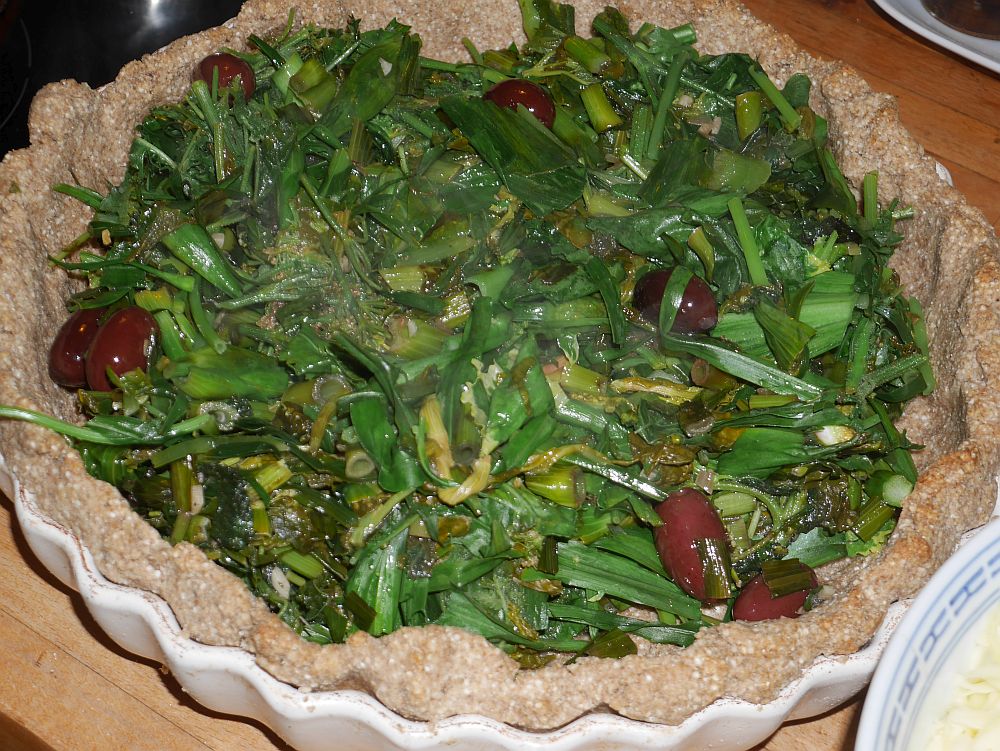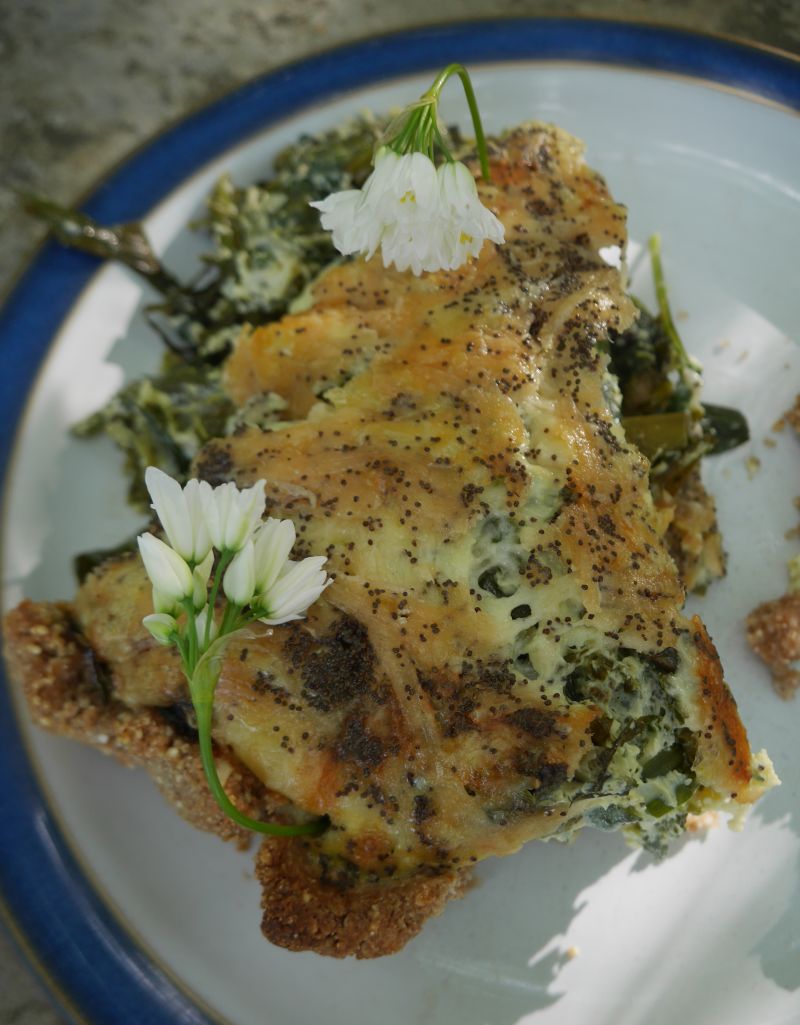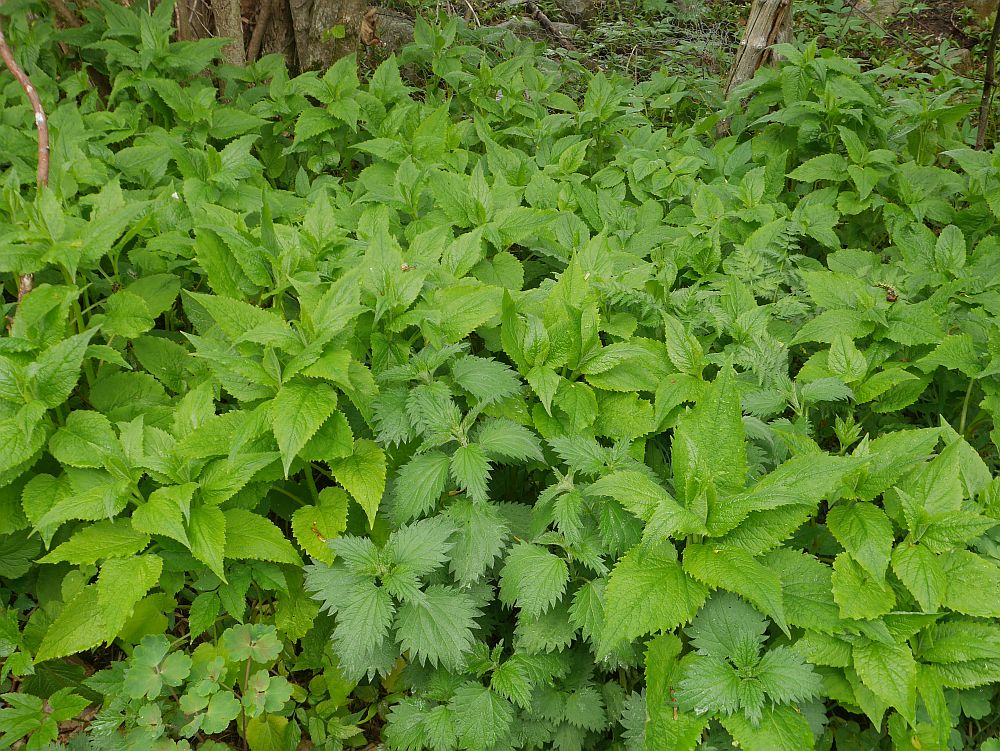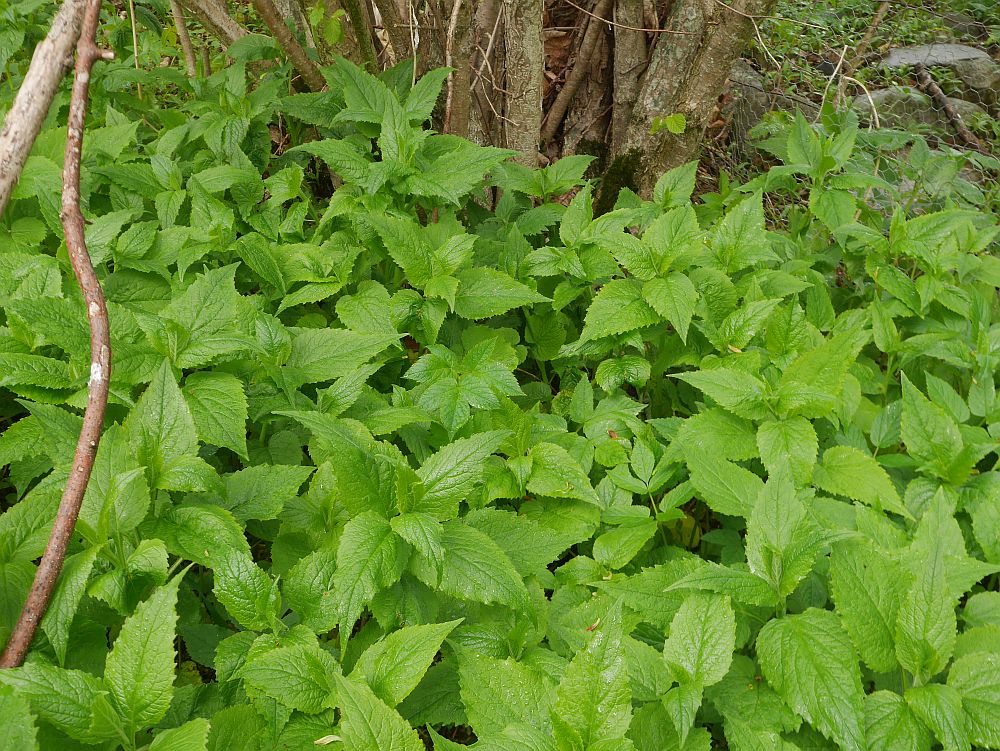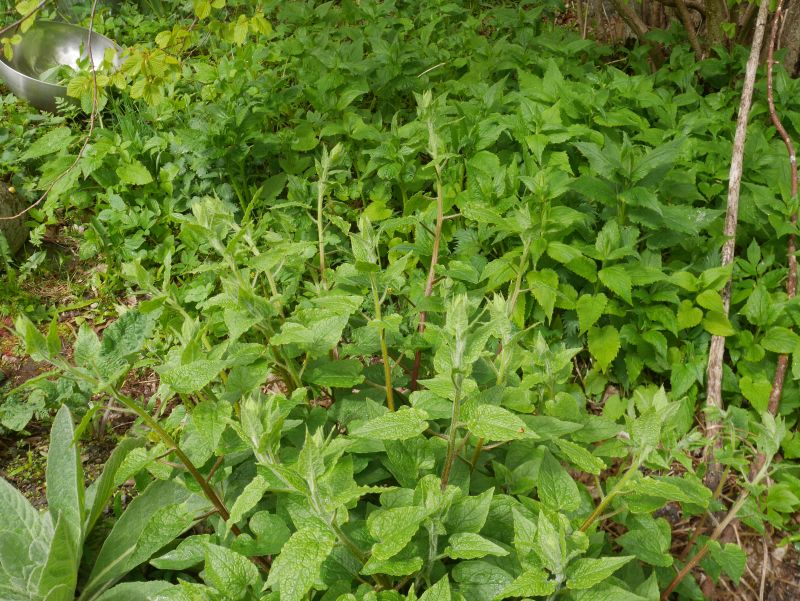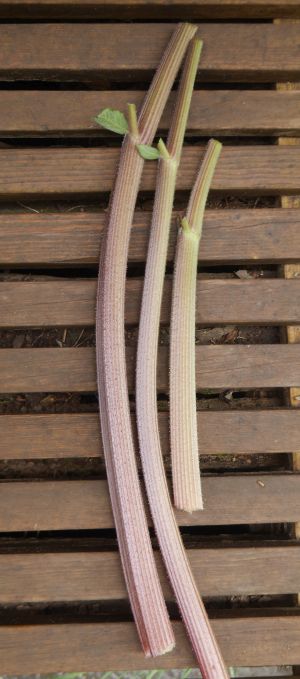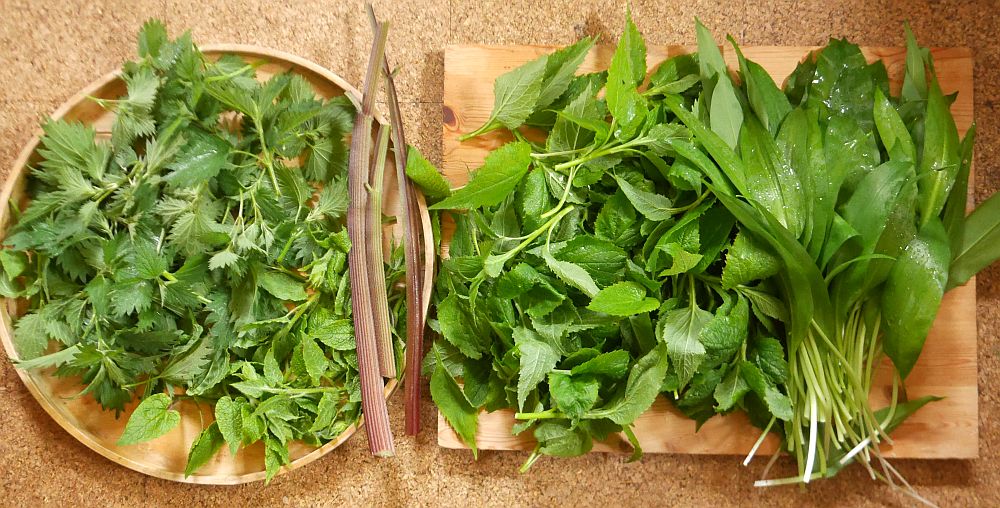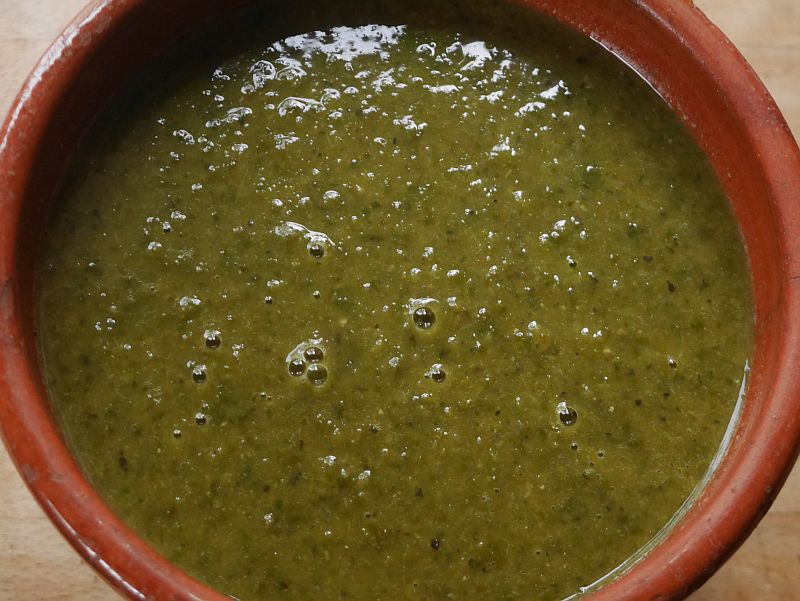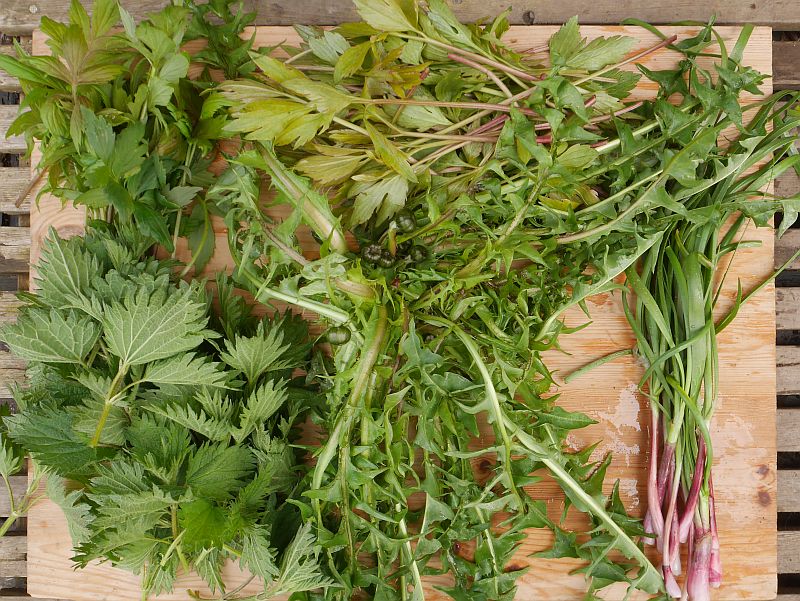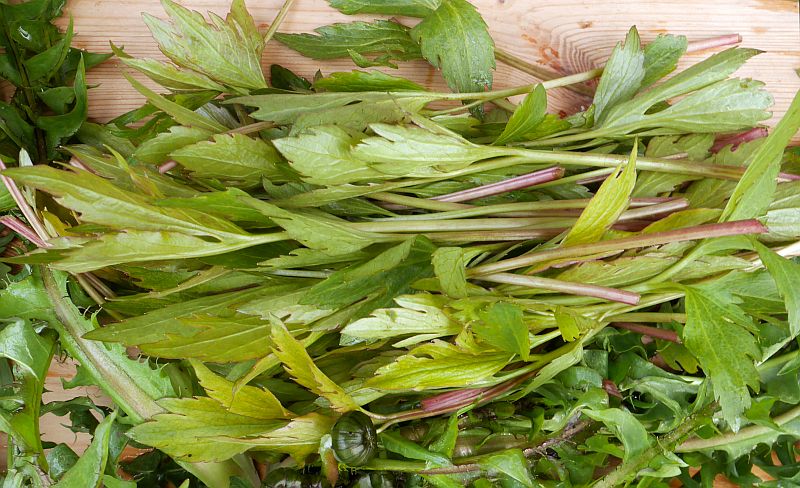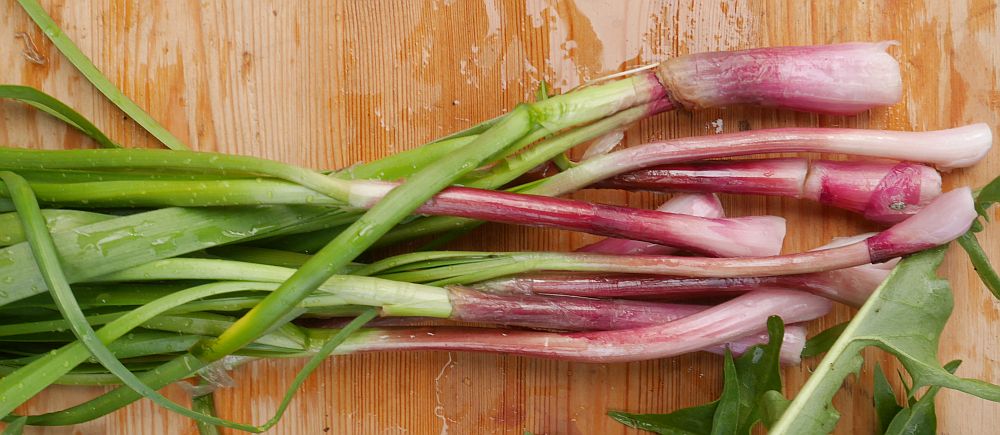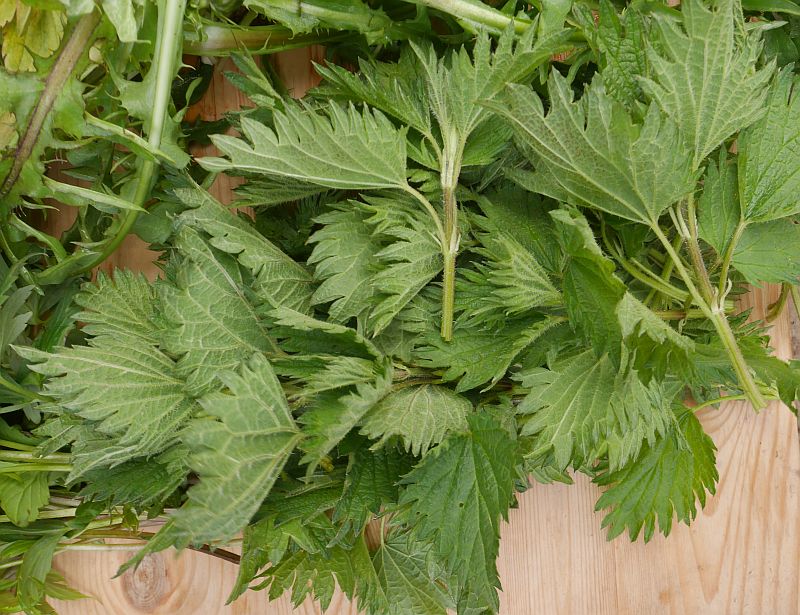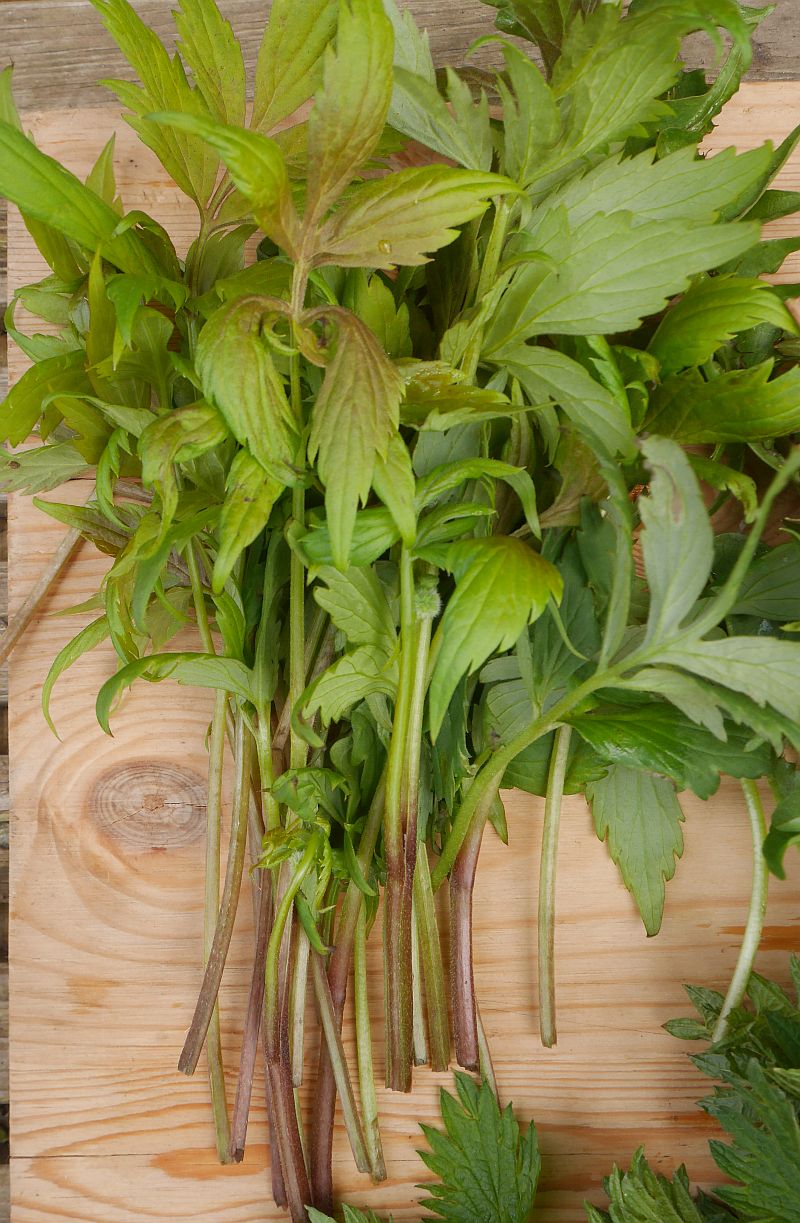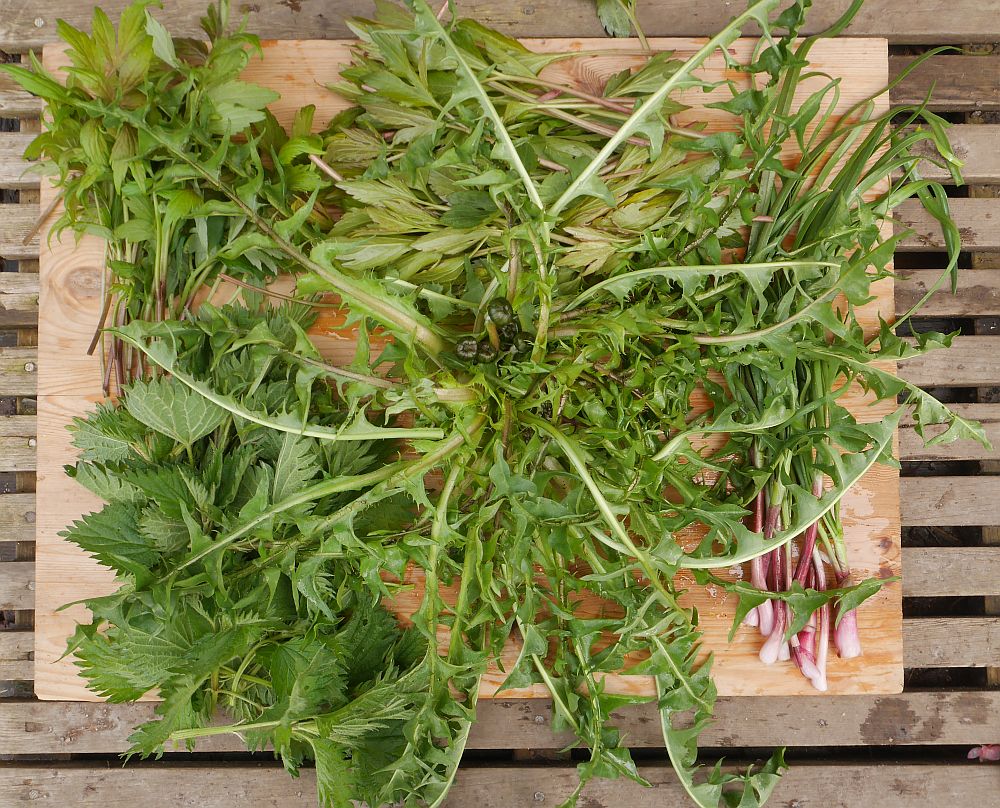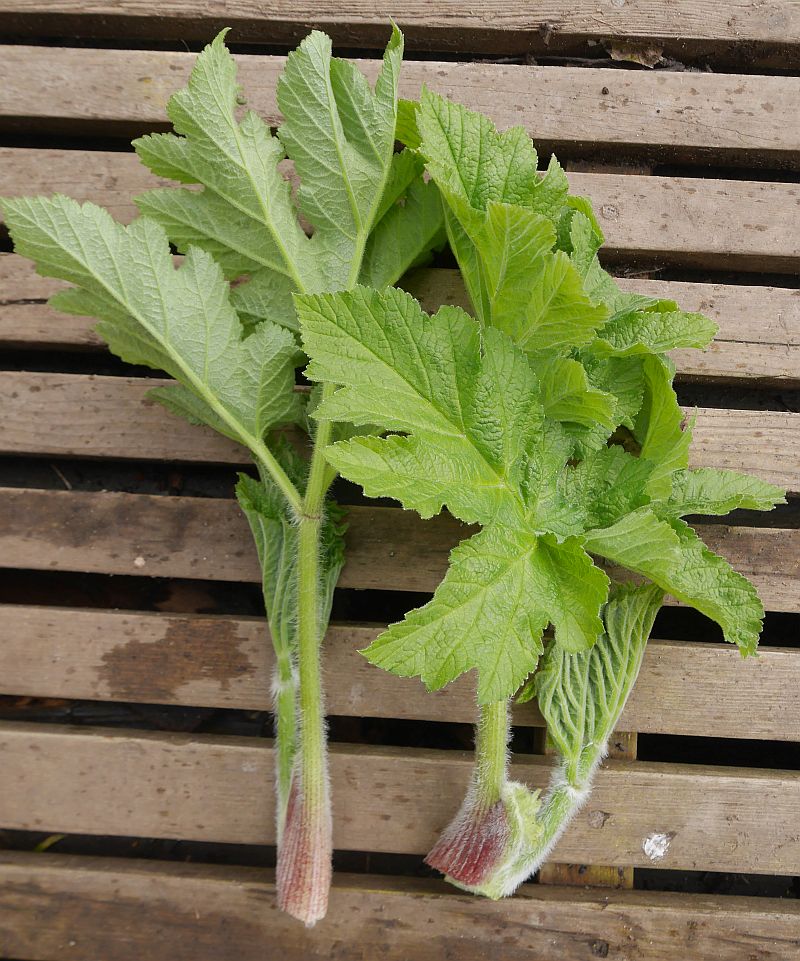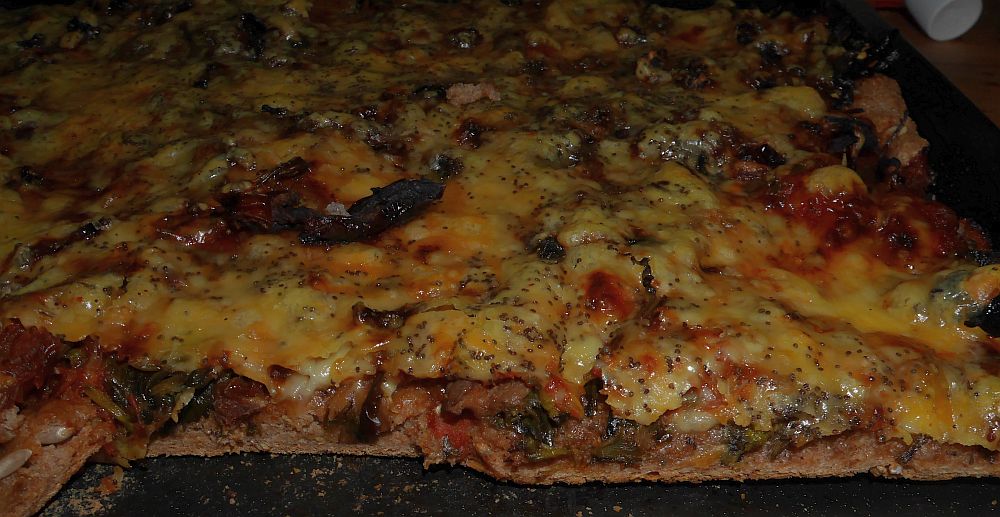This week’s perennial veg stir-fry with soba (buckwheat noodles), Japanese style contained the following (roughly left to right in the picture):
Nettles / stornesle (Urtica dioica)
Burdock / storborre roots (Arctium lappa); stored in the cellar
Wapato tubers (Sagittaria latifolia); stored in the cellar in water
Ramsons / ramsløk (Allium ursinum)
Caucasian spinach / stjernemelde (Hablitzia tamnoides)
Giant bellflower / storklokke (Campanula latifolia)
Himalayan water creeper (Houttuynia cordata) – reddish shoots
Sand leek / bendelløk (Allium scorodoprasum)
Garlic / hvitløk (Allium sativum)

Tag Archives: Urtica dioica
Hablitzia, Laportea and Nettle Gnocchi
What to do with the very last Sarpo Mira potatoes from the cellar? Last night’s dinner was Gnocchi made with Hablitzia leaf, Laportea canadensis (Canadian wood nettle tops) and stinging nettle tops. I must admit that our first attempt turned into a gnocchi soup, so we had a starter with exactly the same ingredients as the main course :) The second attempt was excellent though!
Hablitzia tamnoides leaves:
Canadian wood nettle (Laportea canadensis); the tops of the stems can also be used: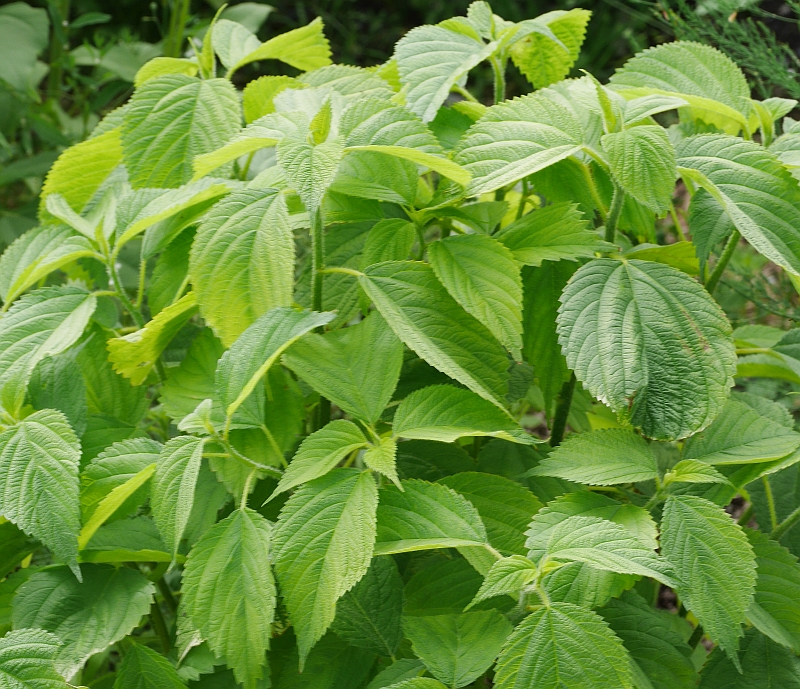 Making the gnocchi (potato used instead of grain for pasta):
Making the gnocchi (potato used instead of grain for pasta):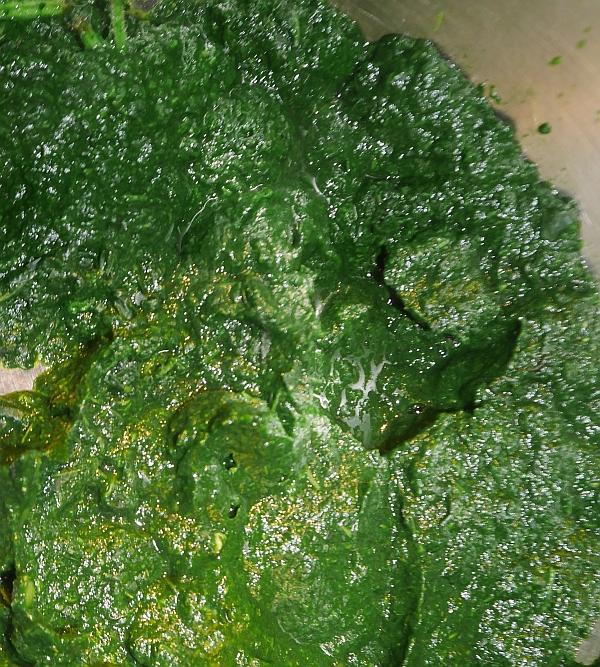
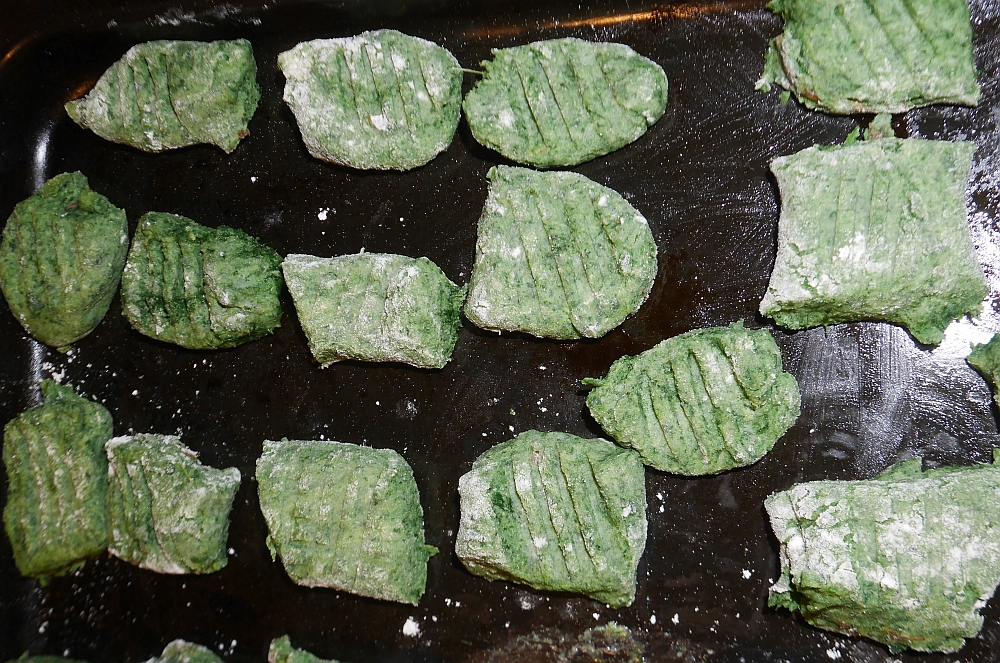

Walking’s not healthy for Habbies
I’ve been growing Hablitzia tamnoides, affectionately known as Habbies, for over 20 years and this is the first registered mortality. On a shallow bed under a birch tree, plants lift during winter as if to walk off to take over the world (OK, probably just frost heave as also happens with parsnip roots), and one of them is now no more, a dead Norwegian habby :( 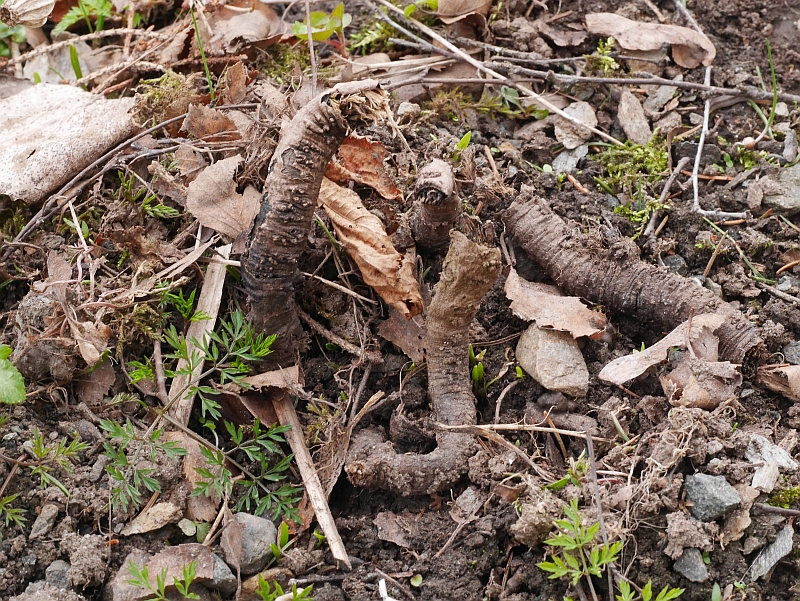
Here’s a few more that are going the same way of I don’t rescue them: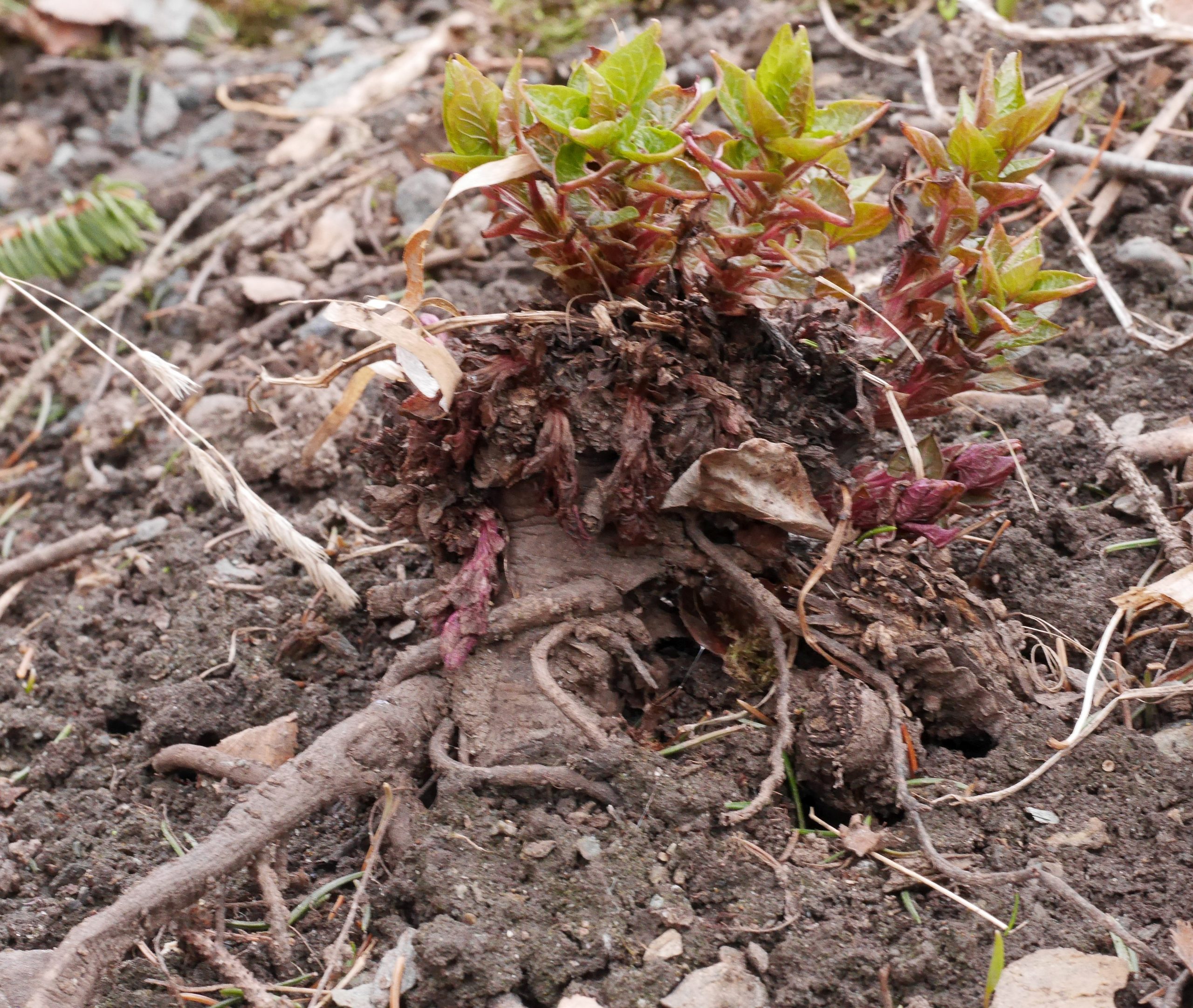
…and below is a nice little edible community where both self-sowed Siberian hogweed (Heracleum sibiricum) and stinging nettle (Urtica dioica) are growing happily in company with Hablitzia tamnoides!
Some odds and ends this week in Malvik
- The best of vegetables ready to harvest this week: blanched sea kale (Crambe maritima), blanched lovage (Levisticum officinale) and nettles (Urtica dioica)! Delicious.
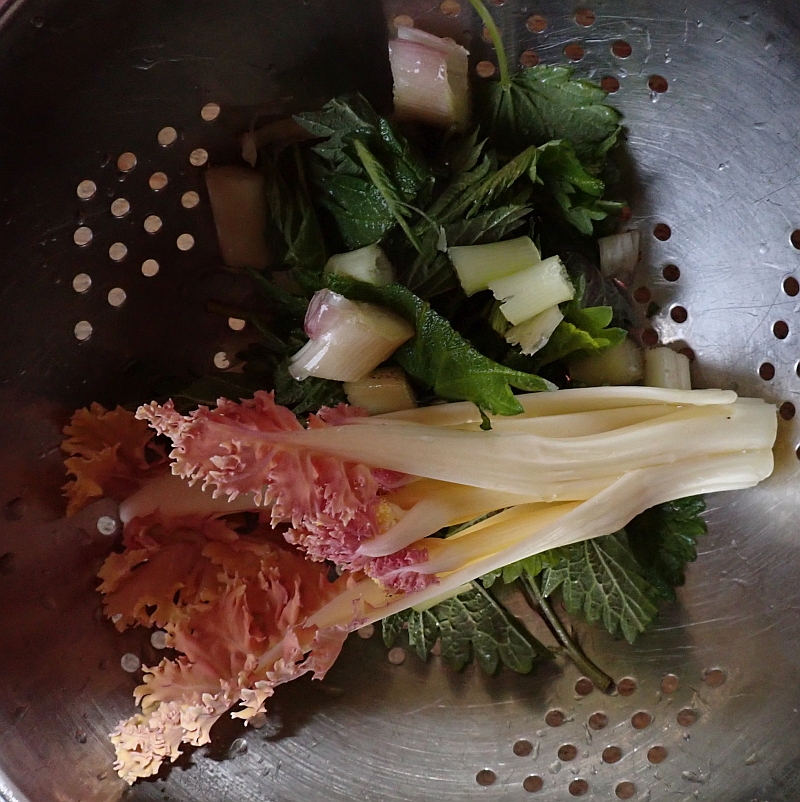
-
IT’S DANDINOODLE TIME HERE IN MALVIK: one of the year’s many highlights!This is by far my earliest dandelion to come into growth in March. It was sent to me as seed from the Alps in Switzerland, following a talk I gave there and was supposed to be similar to the moss-leaved dandelion but the leaves weren’t similar at all. These are from one plant! I’m trying to fine out which species it is…

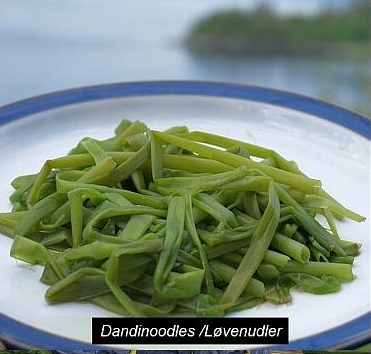 3. Allium paradoxum var paradoxum isn’t a plant you’ll want in your garden as this form has bulbils which can spread invasively. I was sent this 20 years ago from a garden in Sweden as Allium triquetrum but it wasn’t that one. I never considered either of these invasive Alliums as hardy enough to be a problem here and this one has slowly colonised the space around my oldest Hablitzia tamnoides. With warmer winters I have started more aggressive harvesting of this one.
3. Allium paradoxum var paradoxum isn’t a plant you’ll want in your garden as this form has bulbils which can spread invasively. I was sent this 20 years ago from a garden in Sweden as Allium triquetrum but it wasn’t that one. I never considered either of these invasive Alliums as hardy enough to be a problem here and this one has slowly colonised the space around my oldest Hablitzia tamnoides. With warmer winters I have started more aggressive harvesting of this one. I now harvest both the young leaves, the tops, in particular the bulbils to keep it under control. They are delicious both raw in mixed salads and cooked.
I now harvest both the young leaves, the tops, in particular the bulbils to keep it under control. They are delicious both raw in mixed salads and cooked.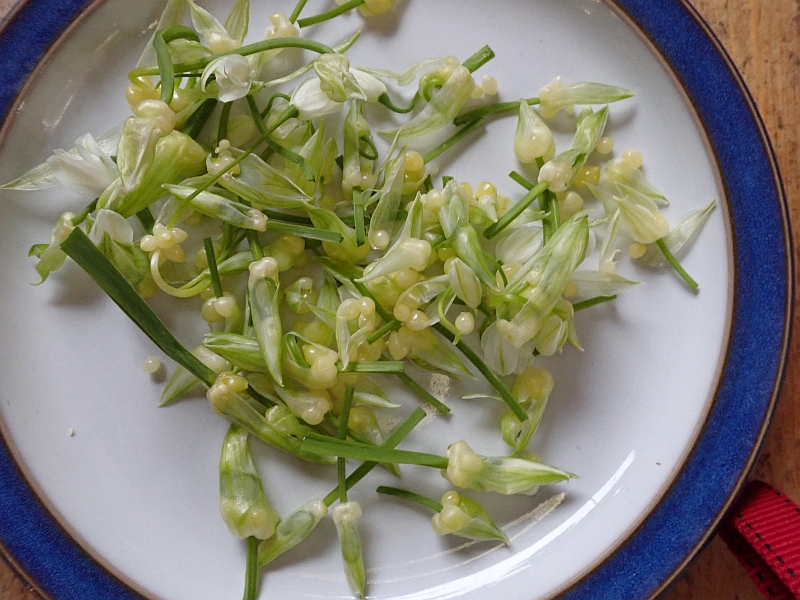
Redpolls on nettle
As I’ve written before on this blog, nettles (Urtica spp.) are important food plants for birds, both due to insects and their larvae feeding on them in summer and the nutrient rich seed in winter. Today there was a small flock of redpolls (gråsisik) feeding on the seed on a small patch of stinging nettle (Urtica dioica) that I’ve been encouraging just below the house and in good view of the living room.
Veggie rich pie
AROUND THE WORLD IN THE EDIBLE GARDEN; Part 3 – Southern Europe and the Mediterranean countries
Inviting you to the third in a series of dinners from Malvik’s Edible Garden where we “forage” from different parts of the world!
If you’ve visited countries in south east Europe you will no doubt have eaten the delicious vegetable pies like Greek spanakopoita, Turkish börek, Italian Torta pasqualina, Bulgarian banitsa and others. Inspired by these and not wanting to make the time consuming to make filo pastry, we made a 100% wholegrain rye/barley quiche like dish with large quantities of the following perennial greens: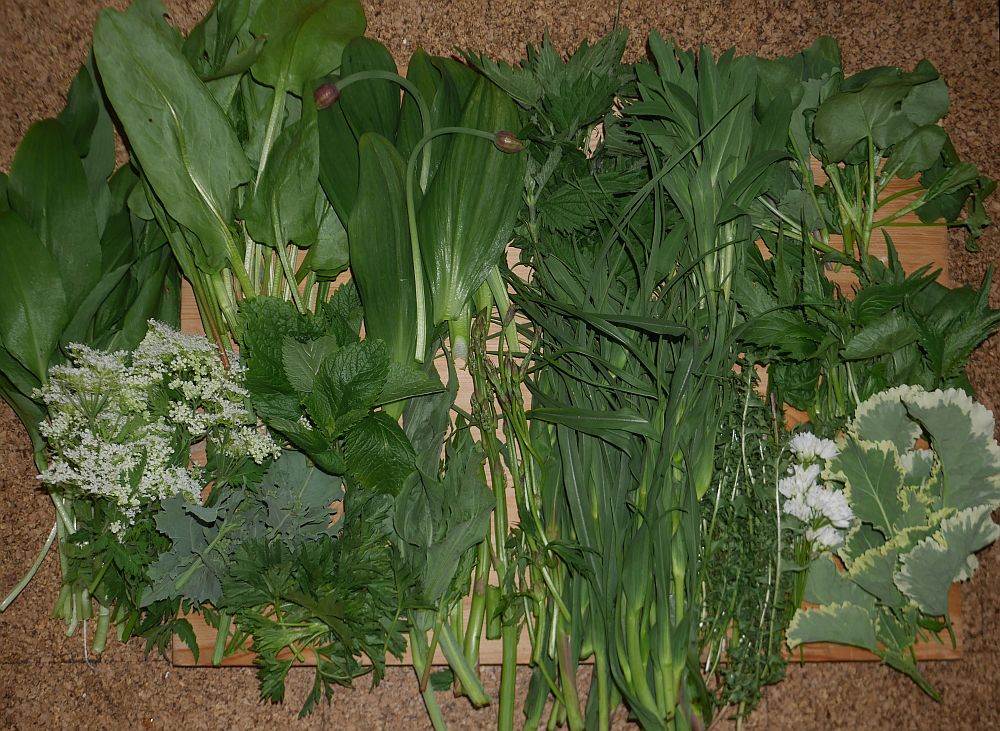
From left to right (from top left) :
Allium ursinum (ramsons; ramsløk)
Rumex patientia (patience dock; hagesyre)
Urtica dioica (stinging nettle; brennesle)
Silene vulgaris (bladder campion; engsmelle)
Rumex scutatus (Buckler-leaved sorrel; Fransksyre)
Rumex acetosa (sorrel; engsyre)
Myrrhis odorata (sweet cicely; Spansk kjørvel)
Malva alcea (hollyhock mallow; rosekattost)
Melissa officinalis (lemon balm; sitronmelisse)
Scorzonera hispanica (Scorzonera; scorsonnerot, svartrot)
Asparagus officinalis (asparagus; asparges)
Humulus lupulus (hops; humle)
Tragopogon pratensis (Jack-go-to-bed-at-noon; geitskjegg)
Taraxacum “Moss-leaved dandelion”
Campanula trachelium (nettle-leaved bellflower; nesleklokke)
Brassica oleracea “Daubenton variegated” (perennial kale; flerårige kål)
Allium zebdanense (white flowers) from Lebanon
(with garlic and chili and imported olives)
Garden wild green soup
Last night we made a green pea soup and apart from the Hablitzia (Caucasian spinach / stjernemelde), I used perennial vegetables growing in a wild part of the garden. With little or no help from me there’s a bounty of wild edibles in this area under wild hazels (Corylus avellana) and this made for a delicious pea soup with masses of greens.
Campanula latifolia is documented as used in spring soups in the 16th century in my area in Norway and Heracleum shoots are also a tradional soup ingredient, in particular Russian borsch now thought of as a beetroot soup was originally made with hogweed shoots.
Cherokee Pizza
AROUND THE WORLD IN THE EDIBLE GARDEN; Part 1 – The Cherokee lands of Eastern North America
The first in a series of dinners from Malvik’s Edible Garden where we “forage” from different parts of the world!
Cherokee Pizza is of course better known as Cherokizza…go on, look it up :). This is the classic Native American Italian dish and it was made in Norway today! All you need is a good selection of Cherokee wild vegetables:
Appalachian greens / kyss-meg-over-gjerde (Rudbeckia laciniata); see http://www.edimentals.com/blog/?p=22018
Nodding onion / prærieløk (Allium cernuum)
Stinging nettle / brennesle (Urtica dioica)
Virginia waterleaf / Indian salad (Hydrophyllum virginianum)
Dandelion / løvetann (Taraxacum spp.) (a giant individual, as you will see from the pictures, growing on seaweed on the sea kale bed)
Cow parsnip (Heracleum maximum)
I used a thick 100% whole grain rye sourdough base for the pizza, so a bit of Denmark in there too!
Wild domesticated edibles and 65 habby days
Tonight’s omelette had more or less only wild edible perennial plants from my area in it, although all grow in my garden, managed in some way…with one exception which has been in every evening meal for 65 days now, the first in this list:
Hablitzia tamnoides (Caucasian spinach / stjernemelde)
Taraxacum officinale (dandleion / løvetann)
Allium ursinum (ramsons / ramsløk)
Campanula latifolia (giant bellflower / storklokke)
Alchemilla spp. (lady’s mantle / marikåpe)
Urtica dioica (stinging nettle / brennesle)
Aegopodium podograria (ground elder / skvallerkål)
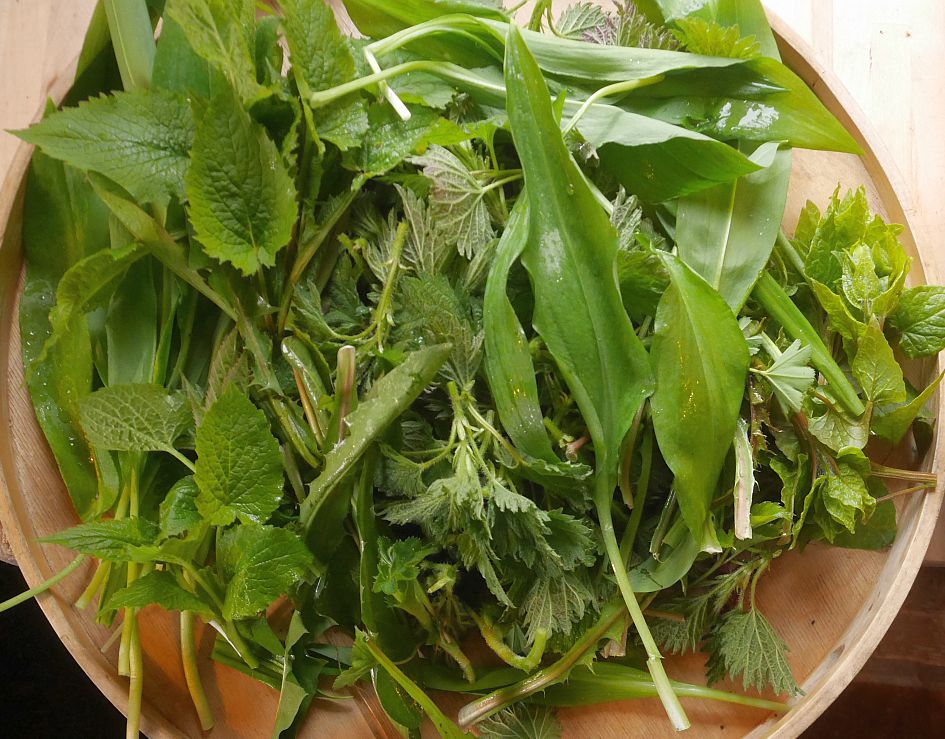
Quinoa greens
Tonight’s 22 greens from the garden with yacon used in a quinoa stir-fry (with garlic and chili in addition):
Brassica oleracea (perennial kale / flerårig kål)
Hydrophyllum virginianum (waterleaf, indian salad)
Tragopogon pratensis (Jack-go-to-bed-at-noon / geitskjegg)
Angelica spp. (kvann)
Allium carinatum
Allium ursinum (ramsons / ramsløk)
Primula elatior (oxlip / hagenøkleblom)
Hablitzia tamnoides (Caucasian spinach / stjernemelde)
Carum carvi (caraway / karve)
Myrrhis odorata (sweet cicely / spansk kjørvel)
Polymnia edulis (yacon)
Urtica dioica ( stinging nettle / brennesle)
Campanula latifolia (giant bellflower / storklokke)
Ficaria verna (lesser celandine / vårkål)
Rumex acetosa (sorrel / engsyre)
Dystaenia takesimana (giant Ulleung celery)
Hemerocallis spp. (day lily / daglilje)
Taraxacum spp. (dandelion / løvetann)
Rheum ribes
Armoracia rusticana (horseradish / pepperrot)
Allium nutans
Aegopodium podograria (ground elder / skvallerkål)



